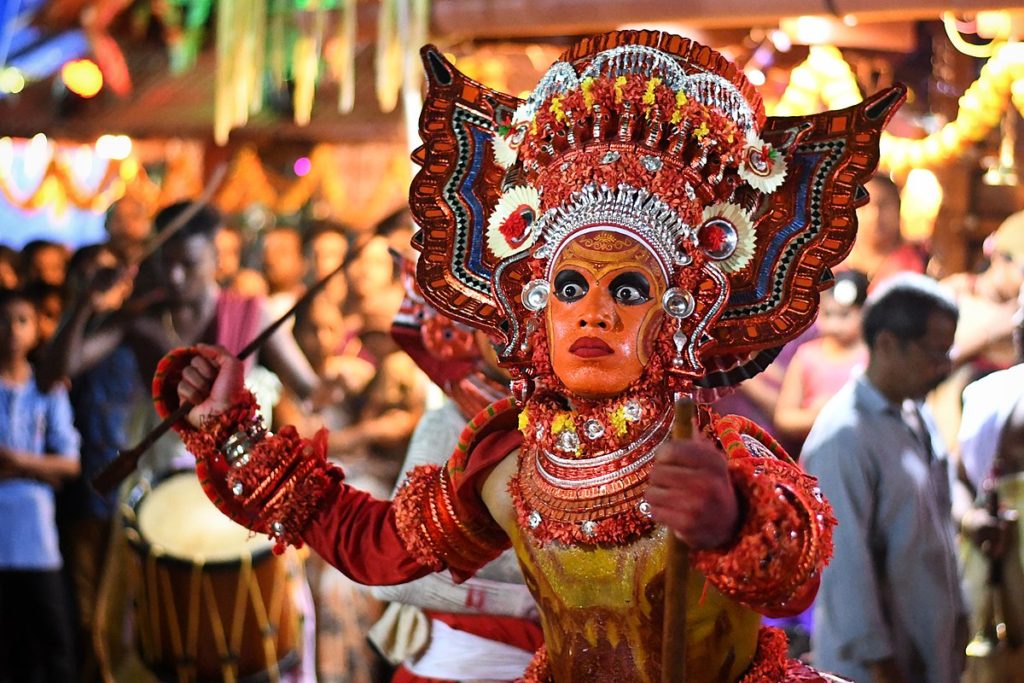
India paints a picture of a disproportionately developed ecosystem of people from different ethnic, caste, religious, linguistic and regional identities, along with economic inequalities. An enormous population lying below the poverty line governed mostly by charismatic abstractions, India’s democratic party system represents a coalition of conflicting interests and ideological spectrums. Kerala is a microcosm of this coalition, translating all such aetiological conditions of being and becoming accustomed to the ways of governance. This has proved to be significantly extraordinary when the state’s trajectory is assessed parallel to that of the model of thought and governance at the centre. The provincial states of south India have been analysed from time to time through such a lens in order to unravel the relationship between regimes, their underlying policies, and their consequent development trajectories.
Kerala represents one of the primary and most significant beacons of the Left movement, structurally and ideologically, across the country, besides West Bengal and Tripura. As an element of colonial modernisation, the region has witnessed a series of social and community reform movements initiated against the caste system, untouchability, and other superstitious practices. In essence, these social movements have laid the foundation for the emergence of more secular movements and class struggles among the peasants and workers, which were first led by radical forces with leftist inclinations. Such developments helped establish the world’s first democratically elected communist government, which came to power in Kerala in 1957, during the post-independence period. The Marxist influence on the communist movement in India, paved the path for its material basis, influencing trends enormously that prevailed in the developmental models embedded within the communist mode of governance. This influence has impacted the ideological superstructure and its constituents, such as the mode of production, the relations and conditions of production, and has created ripple effects in the consciousness of the social being—in one’s political commitment. It is believed overwhelmingly that the presence of a strong Left movement in Kerala has made significant inroads in the caste-feudal nexus in the state and has paved the path for a democratisation of the society with significant welfare components. No other state in South India can legitimately claim parentage of social transformation of such a magnitude.
It is also believed that this ‘leftward’ motion has advocated for the effective premise of the decentralised model of development and governance in Kerala, influencing policy trends in its constituent fields, such as the public health sector, education sector, and agriculture. Such trends are believed to empower and reinforce the existence of the local self–government institutions through legal and fiscal mechanisms, and have contributed to the establishment of the 1996 reform called the People’s Campaign for Decentralised Planning (PCDP). This reform came to life, when the Left Democratic Front came to power, with a public government commitment to devolve 35% to 40% of the plan or development budget to local communities, which has led to better local resource endowment and an improved mobilisation of resources and regional distribution.
These development trajectories enunciate and elaborate the bottom-up model, wherein individuals constituting a particular community are perceived as the real stakeholders, accountable, and responsible for their active deliberation and participation. This type of governance can be understood through the Parsonian model i.e. the needs of the system as a whole are important, and the stability of the system is dependent upon their satisfaction. According to American sociologist Talcott Parsons, individual actors interact and their relations are defined and mediated in terms of a system of culturally structured and shared values. If the equilibrium of the system has to be maintained, a certain core institutional structure has to develop to serve the major functional needs of the society through a consonance between the constituent structures establishing that very system. Thus, a social system must work its way around certain fundamental problems, i.e. allocation of resources, defining and sustaining the pursuit of certain fundamental goals, maintenance of solidarity, and sustaining the motivations of the actors and of repairing any damage to these arising out of the performances of roles. Through Parson’s understanding, the central political realm is characterised by the power to regulate, to decide, to invest and to sustain social development as a local enterprise in consonance with the national goal.

The PCDP encapsulated several elements of development, including education, and emphasised the significance of collective participation within the system of multilevel planning. In the ninth Five-Year Plan (1997-2002), state development grants to local communities increased from 5% to nearly 40%. In the educational domain, the Panchayats at each level were expected to function according to powers delegated by the Kerala Panchayati Raj Act of 1994. Responsibility for schools was transferred from the state government to the different layers of local government. The PCDP began with the identification of gaps in local development at the Grama Sabha level. Development seminars were organised in each village for elected representatives and Panchayat development reports were drafted and task forces set up to address specific sectors and provide training, aggregating into the block and then district plans. The State Planning Board also introduced a Comprehensive Education Programme (CEP) to guide the panchayats better. Furthermore, health activists associated with PCDP encouraged substantial, sustainable, and innovative health projects for the betterment of the public health infrastructure while also addressing the question of accessibility. Thus, the decentralisation of health services in Kerala has led to a significant achievement in the development project
Interestingly, foundations for public policy in Kerala have parted ways with an initial radicalism to a more moderate path for quite some time now, mainly under pressure from feudal and communal forces. Collective mobilisation under the leadership of progressive political forces has influenced the state to sustain the equilibrium of its welfare policies in a rather closeted way wherein the interests of the propertied classes do not remain violated in any capacity, therefore furthering the existence of the paradox of the Kerala development Model. To outlive such paradoxes, a democracy such as India must be looked upon in a symbiotic fashion with its federal states, such as Kerala and its constituencies. This relationship must be nourished by the antecedents of self-reliance, national sovereignty, and political independence, and a sustained commitment and effort should be drawn towards its disadvantaged sections—primarily its minority communities. Social systems cannot possibly prove to be fruitful without an overwhelming political consensus negating biases as well as unkempt mythologies and cutting across class, caste, ethnic, religious divisions that have smothered societies and communities in a disruptive capacity.
Vrnda Dhar is currently pursuing Sociology Honours at Lady Shri Ram College for Women, University of Delhi. She's deeply passionate about the study of Social Anthropology and wishes to contribute to the realm of Conflict and Displacement studies in the future, with emphasis on Kashmir.


